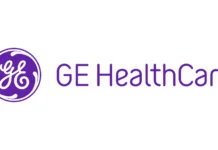According to a new report issued by the IMS Institute for Healthcare Informatics. The surge of new medicines remained strong last year and demand for recently launched brands maintained historically high levels. The savings from branded medicines facing generic competition were relatively low in 2015, and the impact of price increases on brands was limited due to higher rebates and price concessions from manufacturers. Specialty drug spending reached $121 billion on a net price basis, up more than 15 percent from 2014.
The study—Medicines Use and Spending in the U.S.: A Review of 2015 and Outlook to 2020—found that longer-term trends continued to play out last year, driven by the Affordable Care Act and ongoing response to rising overall healthcare costs. Increasingly, healthcare is being delivered by different types of healthcare professionals and from different facilities, while patients face higher out-of-pocket costs and access barriers. The outlook for medicine spending through 2020 is for mid-single digit growth, driven by clusters of innovative treatments and offset by the rising impact of brands facing generic or biosimilar competition.
Total spending on an invoice price basis—without adjusting for the impact of estimated rebates and other price concessions—reached $425 billion in 2015, up 12.2 percent over 2014 levels. Invoice prices for branded medicines rose 12.4 percent in 2015, compared with 14.3 percent in the prior year. Heightened competition among manufacturers, along with more aggressive efforts by health plans and pharmacy benefit managers to limit price growth, resulted in concessions that reduced price increases on an estimated net basis to 2.8 percent, significantly lower than in prior years.
IMS Health senior vice president and executive director of the IMS Institute for Healthcare Informatics said, The challenge of balancing access and the cost of care in an era of innovative but more expensive treatments continues as a theme across our healthcare system. The level of price concessions achieved in 2015 points to a shift in market dynamics as manufacturers accept lower price increases on existing products. At the same time, spending on new brands continued at near-historic levels.

















